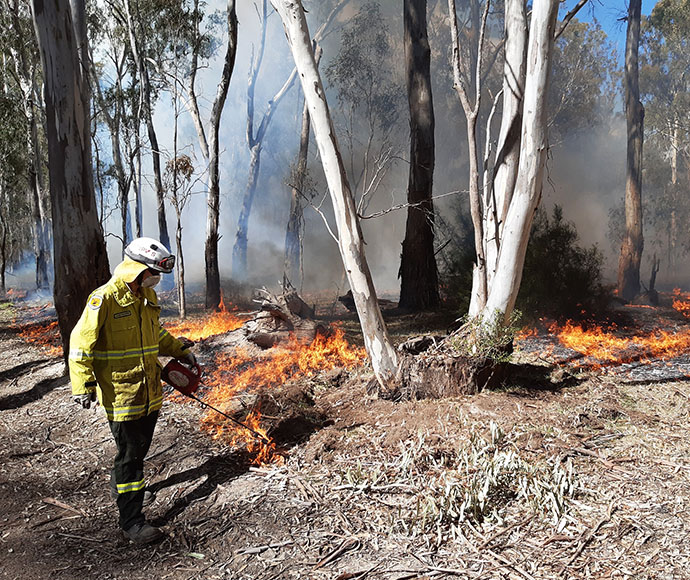National Parks and Wildlife Service (NPWS) in conjunction with Fire and Rescue (FRNSW) and NSW Rural Fire service (RFS) is planning a hazard reduction burn for Georges River National Park Padstow Thursday 4 November.

NPWS Area Manager Brendon Neilly said the 34 hectares burn adjacent to Henry Lawson Drive and Alfords Point Road in Georges River National Park is occurring this week to take advantage of suitable weather.
"This burn will help protect the communities of Padstow and Alfords Point and will further reduce the risk of wildfire spreading through Georges River National Park," Mr Neilly said.
"The burn is due to begin at approximately 10 am and motorists along both Henry Lawson Drive and Alfords Point Road are reminded to beware of potential smoke hazard and drive to conditions.
"Public access to Georges River National Park from Mickeys Point Trail and Bushland Drive including associated walk tracks will be closed during the burning operations.
"Smoke from the burn program may be visible in the National Park and may be evident in local communities depending on wind direction.
"People with asthma or those who are susceptible to respiratory problems are advised to keep clear of the area or stay indoors," Mr Neilly said.
The NPWS hazard reduction program for 2021 is focussed on essential burns to protect park neighbours, assets, or significant habitat to ensure ongoing recovery of the wildlife impacted by the summer bushfires.
All burns across NSW will continue to be coordinated with the RFS and FRNSW to ensure the impact on the community, including from smoke, are assessed at a regional level.
Details on specific burns will be made available in advance on the Rural Fire Service website, 'Fires Near Me' app, and on NPWS Alerts website.
All hazard reduction burns over 50 hectares will be assessed by the NSW RFS in conjunction with NSW Health as required to ensure smoke impacts are minimised.
For health information relating to smoke from bush fires and hazard reduction burning, visit NSW Health or the Asthma Foundation.
For up to date information on these, and other, planned hazard reduction activities, visit the Rural Fire Service.






